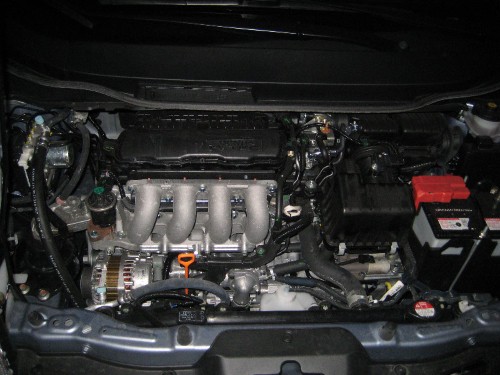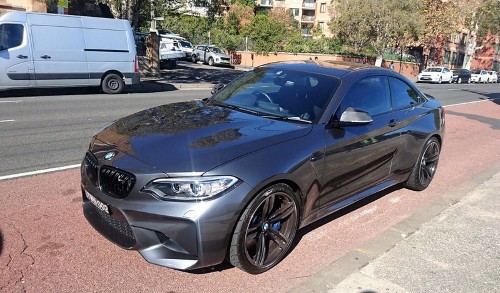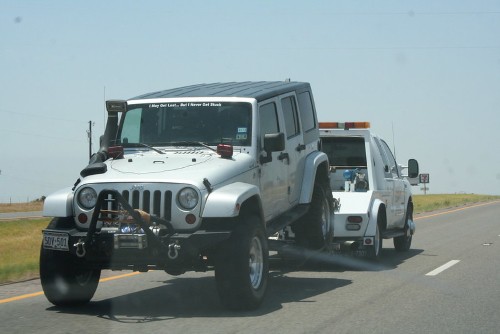Cars come in all shapes and sizes to meet the many different needs of the daily driver so it is no surprise there are a large variety of engines as well. If you’re not a car person you’ll probably find yourself asking at some point, what engine does my car have? When purchasing a car this could be a determining factor for you, but realistically you will care more about the features and what the engine produces, or the gas it uses, than the actual engine itself. Most people look at the gas mileage as a major factor while others may look at the horsepower and torque, but both of these are directly related to what engine the car utilizes.
Before hopping into the common types of engines and what engine your car has, let’s review some of the basic components and terminology of an engine that we will be discussing. Like the entirety of a car, the engine has a ton of different parts, but these are some of the more impactful ones that may be mentioned.
- Engine Block – This is the main component of the engine and is commonly made out of either iron or aluminum. It will have multiple holes that are used to house the cylinders along with holes to allow paths for oil to lubricate the engine.
- Cylinders – Cylinders and pistons can commonly be confused but are indeed different. With pistons being the actual component moving up and down, the cylinders are what is housing the pistons. They are the cylindrical void in the engine block that contain the pistons and can be considered the power unit of the engine itself. Inside the cylinders a fuel/oxygen mix is combusted and the pistons compress it to create energy. Cylinders, and pistons, can vary in size in order to produce different results of power.
- Pistons – These are cylindrical devices with flat tops that are actually managing the energy being created from the combustion in the cylinders, and in turn propelling the vehicle. Pistons move up and down at high RPMs (rotations per minute) and are one the determining factors of classifying an engine.
- Crankshaft – The crankshaft is located in the engine block below the pistons and cylinders. It attaches to the pistons through a connector rod and turns the pistons by converting a linear motion to the rotational movement of the pistons
Watch a visual diagram here to see just what these parts look like and how they work in correspondence with each other to actually create the power needed to move your car.
Understanding the basic components will allow you to make sense of the different engine types. Not only will we review the different types of engines, we will explain some of the benefits and why you would want that specific type. First and foremost, the initial determining factor we can establish is that all cars being driven on the roads are four-stroke engines. The other option would be a two-stroke engine but these are not used for any type of daily driver. In the video above it explains the process of a four-stroke engine and why it is called as such. There are several differences between the two, but we can pretty much rule two strokes off the table since they are not used on road cars.
Different Engine Layouts
What Engine Does My Car Have? To answer that we must first determine the engine layout. This refers to just exactly how the components of the engine are oriented and placed in a car, specifically the pistons and cylinders. Engine layouts are decided on by the manufacturer for several different reasons, whether it be for specific performance purposes or just because it needs to fit in the car a certain way. Here are the most common engine layouts you’ll find in your car.
- Inline Engine – One of the more common types, the inline engine has its pistons, as the name implies, all in line of each other and in a row. They sit perpendicular to the vehicle meaning they are positioned left to right, rather than front to back. The reason they are so common is because of the overall simplicity of them. They are also praised as being exceedingly smooth and do not have many issues. Depending on the exact type of inline engine, they are generally on the smaller size which allows for more room under the hood for other parts. Inline engines are most commonly used in sedans or hatchbacks for the reasons of size of reliability. Having the engine sit parallel to the car keeps the front end of the car shorter and also allows more room for passengers while keeping the car from being too long in the front.
Honda Fit L15A7 i-VTEC 1.5L I4 Engine by paulbmichaels / CC BY 2.0
Looking at the engine, the black rectangle with the four silver pipes coming off of it, you can see just how small and compact an inline engine can be. By just looking at the engine you can determine it is inline rather than straight because of how it is positioned in the bay.
- Straight Engine – Similar to the inline engine, the straight engine has its pistons and cylinders straight and in a row. The difference is, however, this engine layout is set in a front to back orientation. It shares the same benefits of the inline engine and can be oriented as such for the purpose of fitting in other components. Straight and inline engines are typically put under one umbrella as the orientation does not have any significant differences when it comes to performance or complexity.
- V Engine – V engines, like the inline and straight engines, get their name from the orientation of the pistons and cylinders. V engines will include two lines of pistons, positioned front to back, and arranged in a V layout with the cylinders angled at about 60 to 90 degrees. This engine layout can be beneficial for higher powered vehicles because of how compact they can be with more than four cylinders. V engines are also known for producing more torque than the other options which can be helpful depending on your purposes.
V Engines are commonly used in motorcycles because of their reliability and torque they produce. In this image you can see just why they are called V engines if you note the shape of the silver engine block with the two cylinders oriented on a slant.
- Flat Engines (also known as Boxer engines) – Boxer engines may not be as popular as the others but are still used in some modern-day cars. What makes this engine layout unique is the fact the pistons are positioned flat to the ground so they oscillate outwards rather than up and down. This helps for cars to keep a low center of gravity. A typical boxer engine will have equal amount of pistons opposite of each other in order to maintain balance
Pistons and Cylinders
Unlike otherparts of your car, pistons are extremely durable and should not have to be replaced unless there are major issues.
Engine layouts are the first important factor when considering, what engine does my car have. The next would be the number of pistons/cylinders the engine has. Because the pistons and cylinders are part of the engine’s mechanism to generate power and torque it should be no surprise there will be a variety of amounts in order to best meet the needs of that particular vehicle. Typical engines for modern day cars can have anywhere from two to eight cylinders, and if it’s a super car even up to twelve! Manufacturers use engine layouts with different amounts of cylinders depending on if they are designing a sports car, truck, muscle car, luxury car, etc. Whether it be an inline engine with six cylinders or a V engine with only two cylinders there can be a lot of different options to pick from. Each engine layout can have any number of cylinders so we will just focus on the most common engine types on the road.
Engine Size
Engines are measured by the size of the cylinders and use volume as its metric. You will see “Liters” or just an “L” being used to denote engine size. Engine size can also be referred to as engine displacement or engine capacity. Increasing the engine size can have major impacts on its performance and gas usage considering you are increasing the area where the fuel and oxygen mix is being combusted. A larger engine will usually be able to produce more horsepower and burn more fuel than a smaller engine. But engines, and cars in general, are becoming so efficient it is not always the case that cars with larger engines will be faster than ones with smaller engines. Factors such as weight, air intake, and drivetrains can play a determining role for a car’s speed and gas usage. A car with a small engine and AWD could be faster than a car with a large engine and only FWD so don’t let engine size alone be a determining factor for you if looking to purchase a car.
Common Engine Types
Inline Four and Inline Six
Probably the most common engine on the road, inline fours are used in most sedans or compact vehicles. The inline four engine is four cylinders positioned left to right with the pistons moving up and down. The main advantages of and inline four is its small and compact size. It is able to fit in nearly any engine bay which is why it’s so common in smaller cars. The most common inline four engines will be anywhere from 1.5L to 2.5L. With the smaller size comes lighter weight which is great for handling and gas mileage. Inline fours are relatively simple and don’t need too much maintenance. Some common cars that use this engine type are a Toyota Prius, Honda Accord, and Nissan Sentra. This may give you the idea the inline fours aren’t the most powerful engine and generally speaking you are right. They are used for more modest cars and generate anywhere from 100-200 horsepower. BUT that does not mean inline four engines have to be slow.
Cars such as the Volkswagen Golf R, Honda Civic Type R, and BMW 740e XDrive are all fast cars so to speak. These engines are usually on the higher end of engine capacity and can be 2.0L to 3.0L. High performance inline fours can be coupled with a turbo or two to generate upwards of 300 horsepower. Because of their small size and weight this is a significant amount of horsepower.
Because of the many benefits of the inline engine layout, but limited power of a four cylinder, manufacturers will favor inline six engines for higher performance cars. Typically, the inline six will have worse gas mileage than a four cylinder but depending on what you are looking for many people can get past the loss of gas mileage for the additional power. A few cars that use this engine are the BMW M2, Ford Taurus SHO, and Subaru Legacy.
BMW M2 by FotoSleuth / CC BY 2.0
Inline six engines have an additional two cylinders compared to the four-cylinder model. Because of this, the car will usually need to have a wider engine bay to house the additional size of the engine block.
Flat Four and Flat Six
Not as prevalent as the inline four, the flat four is used most commonly in Subaru sedans. The flat four consists of four pistons lying flat. With two pistons positioned on the left and two pistons on the right, they move inwards and outwards at the same time in a horizontal motion. Like other flat engines the flat four is small and efficient and helps to keep a car’s center of gravity low. They can be more expensive to produce than an inline engine but for good reason. They are perfectly balanced and can generate a decent amount of power.
The 2016 Subaru Outback uses a 2.5L flat four engine and produces 175 horsepower and 174 lb-ft torque giving it the ability to tow trailers up to 2,700lbs. If you are looking to increase that horsepower it also comes available as a six cylinder 3.6L that gives it a total of 256 horsepower. So, you can see how the additional cylinders can really make a difference.
Subaru boxer engine by Ivan Radic / CC BY 2.0
Subaru’s flat(boxer) engine is well known for its reliability and performance and is used in many of their car models.
The 2016 Subaru WRX also uses a flat four engine but is only a 2.0L. Even though it is a smaller engine than the outback it is coupled with a turbo that gives it 268 horsepower making it a quick and speedy compact passenger car. Subaru is not the only manufacturer who takes advantage of the flat engines. The new 2021 Porsche 911 does not disappoint its reputable name for being a luxury car with high performance. The 911 uses a 3.0L, six cylinder flat engine coupled with twin turbos! Making it even more unique, it is rear mounted engine meaning the whole engine block is located at the back of the car rather than under the hood. The base model alone produces a whopping 379 horsepower. It’s safe to say the flat engine can produce a good amount of power and is great for everything from everyday drivers to high-performance vehicles.
V Six and V Eight
V engine layouts are most commonly used in trucks and American muscle cars. Having six to eight cylinders in a straight or inline engine layout can take up a lot of room so putting them side by side and angled can help to make them more compact while still gaining that additional power from extra cylinders. A V six or V eight can produce more torque at low speeds so it makes sense a truck would use this type of engine if it needs to tow a trailer or travel with heavy loads. The Dodge Ram comes available as a V six or V eight and comes at several different engine sizes depending on how much horsepower or torque you require. The higher tier can have as high as 700 horsepower giving it the ability to tow even the heaviest of trailers.
Jeep Tow by Paul O’Rear / CC BY 2.0
Many businesses that offer towing services can forgo the cost of purchasing a full tow truck or flatbed truck by utilizing a powerful V8 engine in a normal pickup truck with minor modifications.
American muscle cars favor the V engine for a similar reason. Low end torque and horsepower gives them an all around powerful feeling and can help to move the typical heavy weight of a muscle car. The 2021 Mustang is unique that it comes available in two different engine layouts. The ecoboost model comes in an inline four engine with 330 horsepower which is by no means nothing to scoff at. HOWEVER, if you are looking for that real american muscle power you can opt into the V8 and get 480 horsepower!
Conclusion
What Engine Does My Car Have? Considering three factors this question can be answered in one sentence.
- Engine size/capacity/displacement – The engine size, measured in liters, would be the first thing mentioned.
- Engine layout – State if your engine is an inline, V, flat, or straight engine.
- Number of cylinders/pistons – State the number of pistons/cylinders the engine has.
Using those factors in that order will have you describing your engine as follows.
- 2021 Honda Civic: 1.5L Inline 4
- 2021 Ford F-150: 2.7L V6
- 2021 Subaru Ascent: 2.4L Flat 4
- 2021 Chevrolet Corvette: 6.2L V8
This information is not obvious just by looking at your car, but an easy Google search or looking at your owner’s manual will give you the information. If you are really looking to impress somebody you can also mention the system that is being used to provide oxygen to the engine. The three main options would be, naturally aspirated, turbocharged, or supercharged. If the engine is naturally aspirated you can skip out on mentioning it, but if it has a turbo or supercharger you can mention it first. Using the Golf R as an example, you could say “It is a turbocharged 2.0L Inline four” which gives them a great understanding of what’s under your hood.
Knowing the type of engine you have can give you a better idea of what to expect when driving and can help you make a decision when considering what car to purchase. It also gives you the ability to accurately describe the car you own and let you talk to your gear-head buddies without sounding totally unknowledgeable. So, what engine does your car have?


Jason is a car enthusiast who spends his time writing for Your RV Lifestyle and enjoying the great outdoors in his RV. His greatest pride and joys are his Atlas Airstream motorhome, Volkswagen Golf R and GSX-R750 motorcycle. Although he lives in New Jersey, he finds plenty of farm and back roads to cruise. Jason isn’t afraid to get his hands dirty and is familiar with working on his car and bike to keep them and peak performance.






